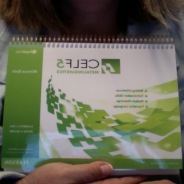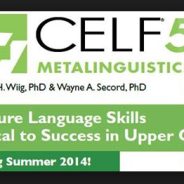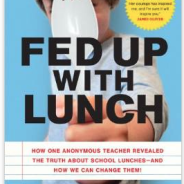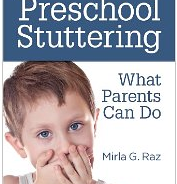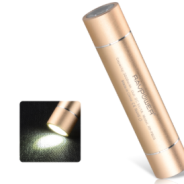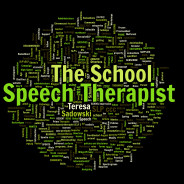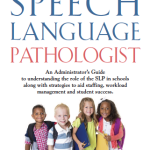SLP Chat
This will be a place where therapists can share ideas, problem solve and express concerns. Lets work together to make our jobs easier!
Teresa
Professional Liability Insurance-a must
The School Speech Therapist welcomes a new sponsor, Trust Risk Management Services. TRMS provides Professional Liability Insurance for Speech Language Pathologists offering comprehensive policies tailored to your specific needs and reasonable rates. You can request an instant quote and learn more about professional liability insurance by going to the TRMS site or clicking the link located in the menu above.
I feel very strongly about the need for Speech Language Pathologists to carry personal professional liability insurance. While the schools and agencies I’ve worked for over the years obviously carry liability insurance, I understood that I couldn’t always depend on my employer for enough protection or cover me if I was sued personally. Carrying my own liability insurance also gave me the flexibility to work with private clients as the opportunities arose without worry. Professional Liability insurance for Speech Language Pathologists is affordable and easy to obtain.
Teresa Sadowski MA/SLP-ccc
AKA The School Speech Therapist
Osmo-I do like this new product!
Over the summer I was inundated with ads from a new educational product called Osmo. It’s basically a very unique app that works with your iPad and incorporates manipulative. After seeing the demo video I was hooked and I had to have one. Mine arrived this week.
The special edition pack came with 2 sets of game manipulatives, Tanagram and Words. A third game called Newton was available for download (using the manipulatives of a paper and pencil or any solid object, including your hands). What puts a different spin on the Tanagram game is that the child has to shift their eye gaze from table to iPad to complete the tasks rather than lay an tanagram on top of a copy. It’s a fairly simple task but for young children or those with learning issues it is wonderful practice. As a therapist, I would love to see Tanagram leveled and expanded down the road.
Word comes with scrabble like pieces and you have to complete a variety of leveled word completion tasks. Pictures are presented, some with letter clues and some without. It’s a little like hangman. You can download and use pictures in a variety of categories. Being able to break the pictures down into specific categories is a big plus for me as a therapist. The most challenging level was somewhat abstract, with a few words/places we had not even heard of but that did make it fun for us.
Newton is difficult to describe. It’s like a pinball game where you have to hit targets, only you are trying to figure out the path to the target. You’re creating the path using pen/paper or other items to create the path, allowing the balls to bounce off and hit the target, while watching it on the screen. Again practicing that eye shift skill.
I tried the Osmo games with a couple of my students yesterday and they both loved them. Both the Tanagram and Word games focused on practicing some of their weak underlying learning skills. It didn’t move too fast for them. Since they really don’t need to touch the iPad while using it, inaccuracy often experienced when hitting the iPad was almost a non-issue.
The one drawback to this first edition of Osmo is that you have to remove the iPad from its case before it can be used. Personally I won’t let my students near the iPad unless it is encased in my Otter Box. Most schools are protecting their electronics with similar sturdy cases. I mentioned this to the company early on, they know it is an issue and are working on it. However, I was so excited with the technology and possible applications I was willing to try it knowing I would have to unearth my iPad from it’s case. At this point it will keep me from using Osmo with certain students and as often as I would like.
My mind has been swimming with ideas on different apps Osmo developers could create to target speech and language, occupational therapy and educational needs. I believe the possibilities are endless. In this day and age where second graders are now issued iPads and preschoolers are put in front of the iPad instead of the tv, adding manipulative to the iPad experience will help to create a more traditional and developmentally appropriate learning experience. I am so looking forward to the development of new applications for education, speech and language development and just for fun.
Are you a CELFie?
With the update and name change of the Test of Language Competence (TLC), the term CELFie takes on a whole new meaning in the world of speech and language pathology. The TLC is now The Clinical Evaluation of Language Fundamentals 5 Metalinguistics. Now that we have two major CELF test batteries, I’m curious. How many of us SLP’s out there are now true CELFies?
I guess I’m a CELFie. I’ve been using the CELF probably since it came out. I easily remember using the CELF 3, 4 and now 5. I used the CELF, back when I still had a typist typing my reports. I’ve always liked it and found it easy to use and reliable. I also liked the Test of Language Competence and used it often with my middle school population and once in a while with my little ones. The TLC desperately needed a makeover. In general, I like the new TLC or as it’s now called The Clinical Evaluation of Language Fundamentals 5 Metalinguistics. Now I have two CELF products that are mainstays in my test battery. My only disappointment is that I purchased the CELF 5 Metalinguistics on good faith without much research and it does not have a component for younger children.
Just because I’m a CELFie does not mean I don’t use my clinical judgement to choose the right subtests and tests for my students based on their need. It just means I find the CELF works well with most students.
Even private practitioners, clinics and hospitals are becoming CELFies. I think this is going to be a problem down the road. We use to turn to outside evaluations to go more in-depth, use other testing to differential diagnose and for second opinions. The last several outside evaluations I’ve read the past 2 years, even language testing as part of neuropsychological evaluations, have consisted primarily of the CELF or subtests of the CELF. This will eventually create one of two out comes, schools will have to accept previous testing from the outside agency or buy other test materials. Both outside agencies and schools will have to keep a close eye on administration dates. I don’t want to be sitting in a meeting and have to tell a parent their outside evaluation, for which they paid dearly for is not valid because the student was given the same test three months earlier. Nor would I want to make the same mistake.
So are you a CELFie?
Have you ever been a CELFie?
What do you like best about being a CELFie?
If you don’t consider yourself a CELFie what is your favorite test battery?
Have you run into difficulty with outside evaluators using the CELF 5 exclusively?
Check out CELF-5 First Impressions
Check out CELF-5 Metalinguistics First Impressions
55 Movies Every Kid Should See and Talk About (before they’re 13)
As a speech language pathologist I always look for fun ways to encourage language development. No matter what I am looking at or reading, my mind is always thinking about how I can present or modify the information/activity to benefit my students (or my own kids). This week I read an article in Entertainment Weekly titled “The 55 Essential Movies Kids Must Experience (Before They Turn 13).” Then I noticed my own young adult children joking with each other by quoting lines from TV/movies or talking about characteristics of memorable characters. Sometime these conversations go deeper discussing the music used in movies, the historical relevance/mistakes, continuity/goofs and trivia.
There is a lot of language that can be learned from TV and Movies. Think about some of the animated Disney or Pixar films that constantly use play on words and sarcasm. Many of these movies have over dramatized scenes that get the humor or point across. These movies pair fun visuals with novel language and kids pick it up. The novel language is also presented in context, making it easier for kids to figure out. They also benefit from hearing the appropriate intonation or sarcastic tone. With video streaming watching a movie more than once is the norm so kids hear movie language over and over.
Use this list of the “The 55 Essential Movies Kids Must Experience (Before They Turn 13)” as a guide to choosing a movie some night when you can’t find anything good on tv. Note that many of these movies are a little old or are based on books. That doesn’t make them any less valuable language wise.
Even though I’ve always personally been drawn to tv and movies, I still recommend reading the book before seeing the movie. Reading will stimulate and help to develop kids inner visualization and visualization is key to language comprehension and critical thinking. Discussing differences between books and movies can also be a lot of fun
Watch movies together once in awhile and after the movie, talk about it. Ask questions beyond “Did you like it?”, quote the lines from the movie once in awhile, sing songs from the movie and bring up movie scenes when they might relate to something currently going on in your child’s life.
This list of 55 in not totally comprehensive. There are a lot of good movies for children and especially tweens that will broaden their language skill and make them think. What movies would you add to this list and for what age level?
Amazon Prime makes it easy to find and stream movies, some free some not. If you shop Amazon a lot, Prime ends up paying for itself.
First Impression CELF-5 Metalinguistics
I was a big fan of the Test of Language Competence (TLC). Almost every middle school student I tested received the TLC. It looked at areas of language not addressed by most basic language batteries. The only problem was, it was seriously outdated. Whenever I lost access to the test, I called Pearson to find out if an update was in the works. The answer was always no but I could never bring myself to purchase the TLC because it was so outdated. You can only imagine how thrilled I was to learn they were finally updating the TLC.
The Test of Language Competence has finally been replaced by The CELF-5 Metalinguistics. The CELF-5 Metalinguistics just arrived in the mail a few days ago so I won’t get a chance to administer it until the fall but I have had a chance to look it over thoroughly. My first impression is that I think I am going to like it. It is extremely similar to the TLC but with updated examples, pictures and other diagnostic material.
The major addition is a Metalinguistic Profile checklist. This is similar in style to the pragmatic profile on the CELF and is designed to be filled out by someone familiar with the student and the students culture. Finding that person might be a little tricky. I notice the language used in the Metalinguistic is rather professional and might be difficult for a parent or caregiver to understand. An SLP may have to walk the familiar person through the checklist. A standard score can be rom the checklist. Being a little old school myself, I’m not sure I like getting a scaled score from an observation. If we need to show data, we’re all set. However, the scaled score from the Metalinguistic Profile is not part of the composite scores.
- The Making Inferences subtest is exactly the same format as the Listening Comprehension: Making Inferences subtest on the TLC.
- The Conversation Skills subtest is very similar to the Oral Expression: Recreating Sentences subtest on the TLC. However, the context and prompts on the Conversation Skills subtest are more specific, meaning the student will have to be more specific on how they interpret the situation presented. I believe that’s a wonderful improvement that will provide significant diagnostic information.
- The Multiple Meaning subtest is exactly the same format as the Ambiguous Sentence subtest. This has always been one of my favorite subtests so I am glad they did not change it too much. Just noticed the new version still has the test item involving relatives visiting. Oh the things we SLP’s find funny.
- The Figurative Language subtest is the only subtest where the name hasn’t changed. I am a little concerned with the new examples but I’ll have to reserve judgement until I give the test a few hundred times. When I present figurative expressions to students, I always try to make sure several are within their realm of experience.
Just like the CELF 5 item analysis is provided at the end of each subtest. I don’t believe item analysis was available on the TLC. Item analysis might turn out to be very helpful or too much information. Personally I rarely used or reported the composite score from the TLC. I felt that the subtests were very different in the skills each addressed on the TLC. I was very selective about which TLC subtests I gave to students and always based my decision on their specific needs, abilities and cognitive skills. The CELF 5 metalinguistic, just like the TLC is not for everyone. (I often use the Test of Auditory Processing Cohesion Index or the Test of Problem Solving to obtain some similar information),
My first impression is that I am going to enjoy giving this test. I feel I will be able to obtain the diagnostic information that I will need to write appropriate educational plans and find entry points into therapy. My only disappointment is that the test does not go lower than 9. The TLC had separate but similar test items that went down to 5. I didn’t use the TLC that often for the students under 9 but when appropriate it was a excellent diagnostic tool.
If you are using the CELF-5, the CELF-5 Metalinguistics is a must have, especially when working with older children. It gives many test items in each section and is fairly quick to give.
I would love to hear about your first impressions, especially if you’ve had a chance to give the CELF-5 Metalinguistics.
Fed Up With Lunch – Book Review
Book Review
“Fed Up With Lunch”
By Author: Sarah Wu
As a 30 year veteran of the public school system, I can tell you honestly that I haven’t voluntarily eaten a school lunch since 1983. I won’t go into the gory detail but lets just say that the meal of pulled BBQ pork just didn’t sit well. I’ve worked in many school systems and have witnessed many attempts to upgrade school lunch programs. These changes included hiring a new person to run the school lunch program, new schools with elaborate cafeterias, bringing in an outside service to run the food program, salad bars, menus with fun upbeat names and finally the worse going from a lunch lady who actually cooked the food to a service that provided styrofoam trays pre-filled with extremely small portions of reheated food (I guess that saved money). Despite these attempts to improve school lunch, to me the lunches always looked like the same crap food served in a different way.
As you can tell I have a total distain for school lunch programs so when a related search turned up Sarah Wu’s book “Fed Up With Lunch,” I knew it was a must read.
“Fed Up With Lunch” is based on Sarah Wu’s experiment and original blog. She vowed to eat a school lunch everyday for a year and blog about it. In the process she observed a few disturbing secrets about school food programs. Some of Mrs. Wu’s research involved looking at the ingredients in school food, analyzing menus, what actually passes for nutritional requirements, lack of fresh food, over packaging/processing and where some of the food comes from. Her school lunch journey has taken Mrs. Wu from blogging anonymously as Mrs. Q to appearances on various national panels to this book.
Along with talking about “the food” in school lunch programs. Mrs Wu also delves into the fact that children are rushed through meals at school and have little or no opportunity to move through the day. This is what I have personally observed in every public school I have ever worked in. Mrs. Wu was also careful to point out that Lunch Ladies are not cooks anymore but servers. Yet what they are given to serve often reflects badly on them when what to serve is usually an administrative decision.
Mrs. Wu’s book goes just short of criticizing government policies, Michelle Obama’s Lets Move program or school administrators. In her book she chooses to take a more active approach by suggesting her own ideas for positive change and providing several suggestions on what parents, teachers and students can do to improve their school lunch programs.
This was an informative and well organized book. Reading it should make any parent, teacher and school administrator think twice about what school are serving and what their kids are eating. I find it ironic that just about every school in America has alined themselves with the government sponsored wellness program, but yet the food served in schools in the United States has not improved one bit and physical exercise is not strongly encouraged. Under the new wellness programs in schools, I can’t give a hungry student a granola bar or even an apple but school cafeteria still serve grey green beans, mystery meat or tater tots several times a week. The amount of food thrown away on any given school day in any school I’ve ever worked in is astounding. Parents have no way of knowing what or if their kids are eating unless they make a concerted effort to ask or occasionally observe. Apparently in some school districts, bringing a lunch from home is not even an option.
I loved the idea of Mrs. Wu’s project and enjoyed reading about her experiences. It made me think, perhaps school food would be better if all the administrators were required to eat school lunches or not allowed to bring lunches from home. Wouldn’t it be interesting if the food served to the kids at lunch was also served at school functions and administrative meetings, styrofoam trays and all. Something tells me food services would improve greatly. Any administrators or districts that want to take on that challenge?
The Fantastic Speech Therapy Blog List
Hi Everyone,
It’s been awhile but I finally added a few more sites to my SLP blog list. Welcome to the following blogs
You can link to my entire page of SLP blogs at https://theschoolspeechtherapist.com/slp-blogs/. I am always looking to add new and interesting blogs to highlight. If you’re a blogger and believe you have something unique let me hear about it. Comment below.
T.
Book Review: Preschool Stuttering-What Parents Can Do
Mirla G Raz author of the Help Me Talk Right Series, which focuses on how to teach /r/, /s/ and /l/ in 15 Easy Lessons has come up with another winner. This time she focuses on helping parents of preschool stutters in her new book “Preschool Stuttering, What Parents Can Do”. This book is a common sense guide for parents, giving them all the information they need to give and get their preschooler the help they need. “Preschool Stuttering, What Parents Can Do” is also designed to try and help alleviate concern through knowledge.
The initial chapters help to demystify disfluency in young children. Ms. Raz thoroughly explains stuttering risk factors and typical vs. atypical disfluencies observed in preschoolers. She goes on to give many important tips an examples on how to respond to a child who is dysfluent. The emotional impact of stuttering is also discussed in-depth along with the impact of environmental changes or life event changes.
The latter chapters of “Preschool Stuttering, What Parents Can Do” focus on getting professional help. Ms. Raz provides guidelines on when to seek professional help , what type of therapy services are necessary for making the most effective progress, what to expect from the therapy process, question to ask and the parents role in the therapy process.
“Preschool Stuttering, What Parents Can Do” is written and organized in such a manner that it is easy to understand and follow. There is a brief bulleted preview and review for each chapter pointing out key points. This provides a wonderful summary and makes it very easy to find information at any point. Some subsections of this book are also bulleted also providing a quick review. The final chapter is a Q and A of questions that may come up during the course of reading this book.
“Preschool Stuttering, What Parents Can Do” in my opinion covers it all. This is not a book only to be recommended by Speech Language Pathologists. It’s extremely parent friendly and would provide an excellent starting point for parents who are concerned about their child’s disfluencies. Preschool teachers, pediatricians, nurse practitioners, psychologists and counsellors should all be familiar with this book. It is one of the best parent information guides I’ve seen in years.
Other books by Mirla Raz (and yes I do use them!)
Product Review: RAVpower Luster Mini 3000mAh Portable Charger
RAVpower has asked me to review one of their newer products the Luster Mini 3000mAh Portable Charger Lipstick-Sized. At this point the product gets a thumbs up from me. However, initially I had a difficult time figuring out how to use it and if I really needed a small portable battery charger.
At first I was a little unclear about the purpose of the portable charger. This charger is designed for a phone not for a iPad or tablet. After reading the directions I charged up the unit overnight. Nowhere in the directions (that I could find) does it tell you that the unit is fully charged when a light changes from red to blue. After charging overnight I thought I saw a little red/blue thing going on but I wasn’t sure. The Luster Mini just didn’t seem to be working.
I contacted RAVpower, believing that I received a defective charger and I immediately received a replacement. After using both Luster Minis a few more times, I realized that the units worked fine and the lights changed indicating that it was charged. It seemed that the Luster Mini needed a good long initial charge then cycle down once or twice. Now both Luster Minis hold a charge fabulously. There is no way to tell that the charge is low but if it runs out the flashlight feature will not operate.
So when would the Luster Mini come in handy? My phone is old and is holding less of a charge these days. However, I have a car with both a regular plug and the typical car charger. I’m almost always in my car. My iPad runs out of power more often but I would need a larger battery pack for that.
A couple of weeks back I found a use for the Luster Mini. We took a trip to New York City. My phone was working hard and losing power quickly. Even with a good overnight charge by mid afternoon my phone was almost out of power. I knew this was going to be the situation so I charged up and packed both of my Luster Mini chargers. When my phone power was waning, I was able to connect my phone to the charger and carry both in a small across the chest bag.
While this product is called “Lipstick-Size” it is slightly bigger in both length and diameter. A tad heavier than a lipstick but not too heavy to carry around in a small bag. The charge takes awhile but the Luster Mini will keep your phone going. The Luster Mini comes with a cord to charge it (you use your own detachable plug piece) then you use your own phone cord (without the plug piece) to charge your phone. There is a flash light feature with both a steady and strobe light. This light is very bright. We lost power a few weeks ago and the Luster Mini lights came in very handy.
After using the Luster Mini for a while, I am very pleased with this product. I could see myself using this battery pack more often if I traveled more for work, worked in the city without a car, had to go from place to place or if we did lose power for a long period of time. The Luster Mini is also a good product to have with an aging phone that is losing it battery life. I was also extremely pleased with the customer services at RAVpower.
If you’re in need of an external battery pack for your phone, I recommend the Luster Mini 3000mAh Portable Charger Lipstick-Sized. It is currently listed at 14.99 on Amazon.
Your School Newsletter and Your SMART Goal
For the past year and a half I’ve worked for a school district a couple days a week. When you work very part time in a school you usually get to slip under the radar for many things. SLPs in my position are sometimes even considered consult types. You tend to miss a lot of information on procedures. Anyway, SMART goal writing finally caught up with me. I was there during the initial explanation of SMART goals at the beginning of last year so I wasn’t totally unprepared. I had an idea of what I wanted to do and have actually been implementing my ideas. I even had a rough draft of my goals. Last week I was finally asked to input my goals and it was extremely simple.
My one specific professional goal was to share my knowledge with parents by providing 6 articles per year to the school newsletter. These articles focus on strategies and activities to encourage language development. I’ve been doing this since October of 2012 and have provided more than my specified 6 articles per year. While it’s true not many actually read school newsletters, I have received positive feed back from parents, teachers, paraprofessionals and most important my school principal.
Rather than have these articles just sit on my computer, I thought others might want to take these parent focused articles and post them in their own school newsletter. Figuring out the best way to share the articles has been tricky. At this time I’ve opened a store on Teachers Pay Teachers.
My articles are perfect for K-5 school news letters. The articles are very reasonably priced, the first is even free. At this time the articles are presented in word format so other SLPs or teachers can take the articles and tweak them to fit their schools needs. In the future some but not all articles will remain in word format (this is something I’m figuring out).
I would love for you to to check out my store on TPT and give me feedback on this idea. In the future I would be willing to bundle the articles if there is a need for that.
Teresa
Related Articles
Share Your SMART Professional Development Goal



